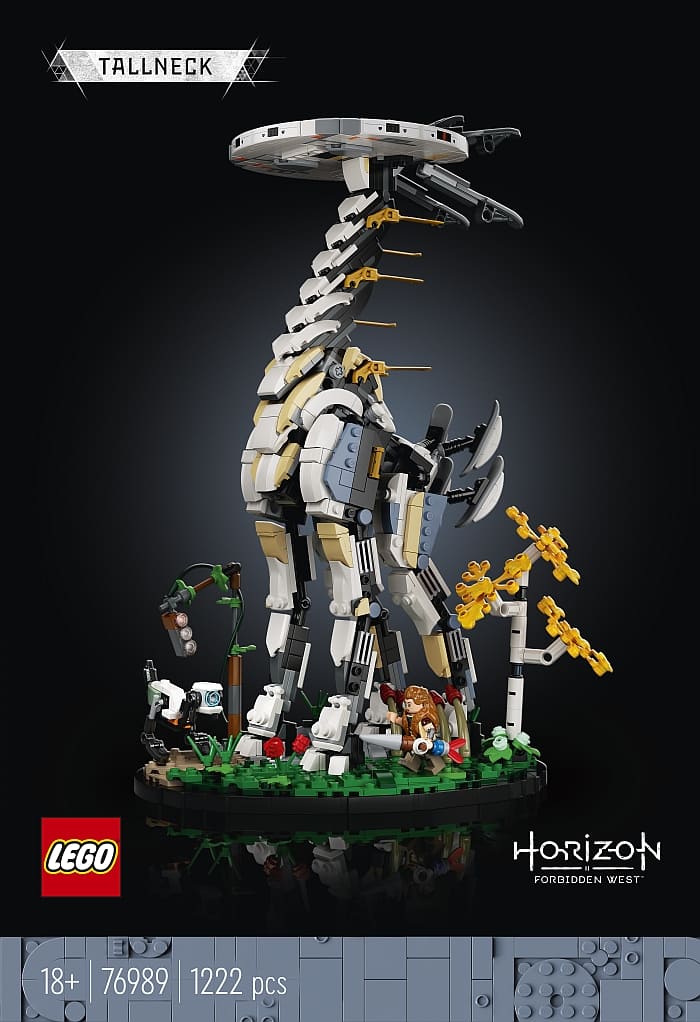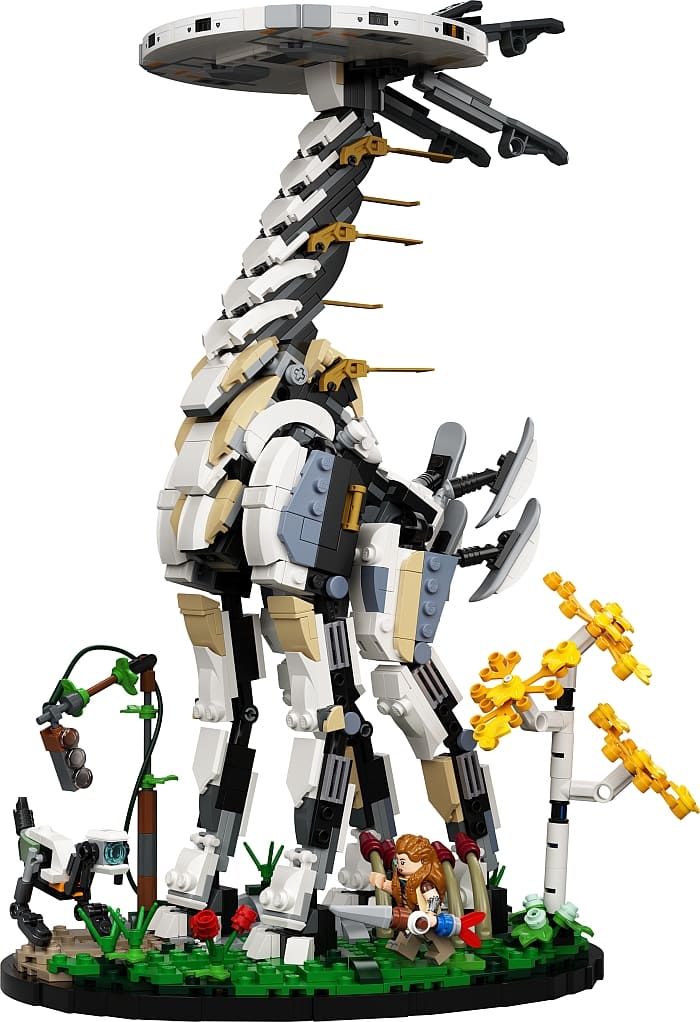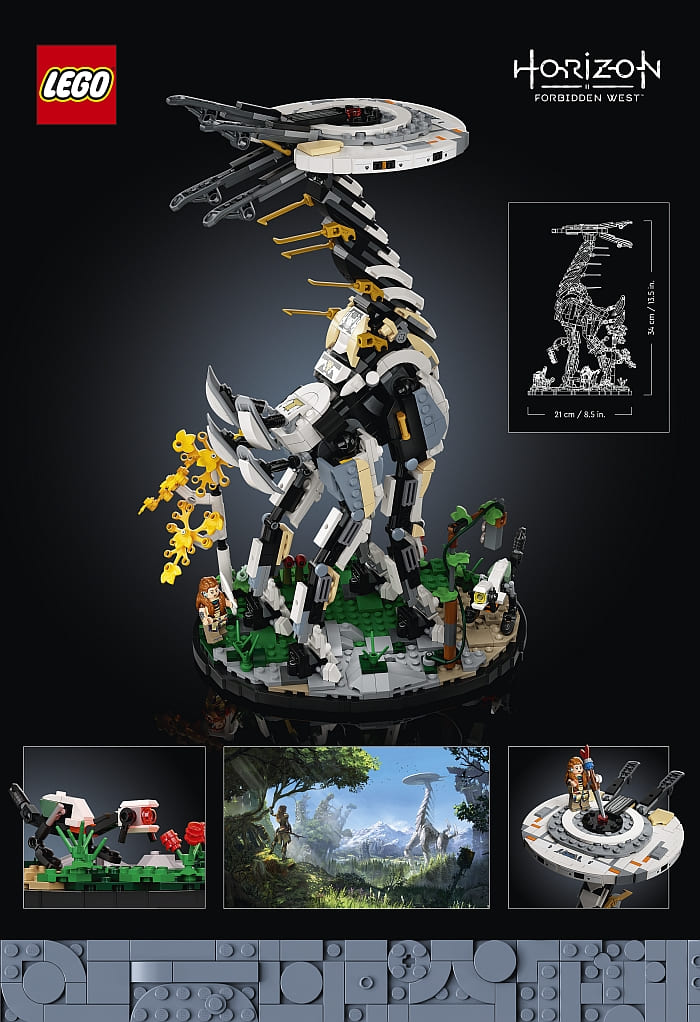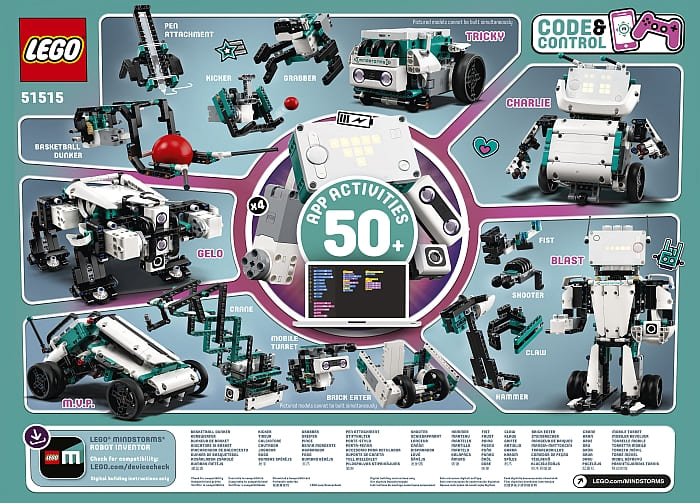The LEGO Group teams up with PlayStation to bring to life the new #76989 LEGO Horizon Forbidden West Tallneck set. Details below.

The LEGO Group and PlayStation, join forces to delight fans of both brands with the very first LEGO set inspired by the world of Horizon Forbidden West. Working with acclaimed developer Guerrilla, the collaboration – recreates the authentic features within the Horizon Forbidden West videogame and transforms the experience into LEGO brick form for fans around the world. Designed as a build and display model, this 1,222-piece set is sure to invite builders into the 31st century and encourage imaginations to flow freely through the process of building out the Horizon universe.

Guerrilla is one of Europe’s leading game studios and a wholly-owned subsidiary of Sony Interactive Entertainment Europe. Since its inception in 2000, the Amsterdam-based studio has continually pushed the boundaries of technical and artistic excellence. Today, Guerrilla employs over 350 professionals from 25 nationalities. Its latest title is the anticipated open-world action-RPG Horizon Forbidden West, which will be released on 18 February 2022. Learn more about Guerrilla at www.guerrilla-games.com.

This LEGO set for adults will take builders into an adventure world through Aloy, a fierce machine hunter, and the Tallneck, the iconic and awe-inspiring machine Aloy uses to explore nearby areas in her mission to restore order and balance in Horizon Forbidden West. Included in this set is a brand-new headpiece for Aloy, the Watcher machine that comes with a choice of blue, yellow, or red eyes and her bow and brick-built spear, alongside the authentic Tallneck machine, with a smooth, disc-shaped head and long slim legs to add striking features within the model. Fans can finish their build by adding beautiful landscape details like the brick-built birch tree, tall grass, and a rusty stoplight, completing the centerpiece for its display moment.
“Getting to team up with Guerrilla was truly remarkable,” says Isaac Snyder, Designer at the LEGO Group. “The Guerrilla team is incredibly passionate about the world of Horizon Forbidden West and was a huge help in ensuring we were able to create an authentic representation in LEGO form. Thanks to our close collaboration we were able to include references to all the most iconic aspects of Horizon Forbidden West, from incredible machines, mysterious ruins, unique tribes, and stunning scenery. There is a huge amount of mutual respect between the design teams and everyone involved was beyond excited to see this model come to life! Our hope is that everyone building this model has as much fun as we did designing it.”

The buildable Horizon Tallneck model has 1,222 pieces, measures over 34 cm (13.5 in.) high, 23 cm (9 in.) wide, and 17 cm (6.5 in.) deep, and will be available globally from May 2022 from major retailers, official LEGO stores, and the Online LEGO Shop. Prices are as follows: 79.99 EUR/ 79.99 USD / 69.99 GBP / 129.99 AUD / 99.99 CAD. For more information, visit the Online LEGO Shop.
What do you think? How do you like the new LEGO Horizon set? Feel free to share your thoughts and discuss in the comment section below!


















